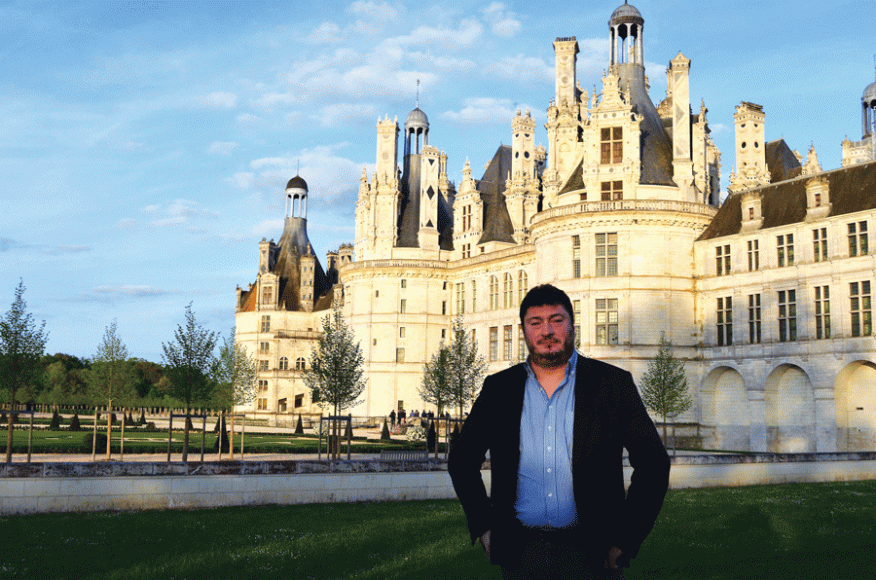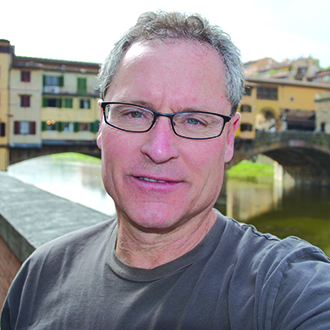The Loire Valley to the west and south of Paris, and the Champagne region to the east of Paris have been the northernmost regions in France for grape cultivation and winemaking.
The Loire River, at 630 miles, is the longest in France and drains nearly a fifth of all the landmass of France. The river itself, with the water moderating the air temperatures while throwing off reflected sunlight, is responsible for bumping the temperature up a few degrees to allow for proper growing conditions. The Loire Valley — known as the Garden of France, as much of the fruits and vegetables necessary for people and livestock are grown there — and the Loire River have, for centuries, allowed for relatively easy access to Paris.
Castles and chateaus were built along the river originally as fortifications against enemy invaders. And then a bit of one-upmanship began, with each king, lord or merchant wanting to outdo or, at least, impress the aristocracy and the locals. Today there are close to 300 chateaus in the region. On a recent trip we visited a few, notably Chambord and Chenonceau. With 600 rooms, 282 fireplaces and 83 staircases, including a centerpiece double-helix staircase inspired by Leonardo da Vinci, Chambord was originally used primarily as a hunting lodge. Chenonceau was built in the 1500s and gifted to multiple kings’ mistresses over multiple generations. It was used as a hospital during World War I and occupied by the Nazis in World War II when it was bombed by the Allies, its chapel windows destroyed. Today, however, a resurrected Chenonceau is close to welcoming one million visitors per year.
Oh, but the wines. If you are a fan of honest, pure, unmanipulated and fruit-driven wines, the Loire Valley is perfect for you. On a previous trip to the region, Charles-André de Cossé-Brissac, the owner of Château de Brissac, told us, “The Loire Valley is quite simply the most versatile winemaking region in all of France and, quite possibly, the world.” It is the top French region for white wines, the second French region for sparkling wines after Champagne and the second French region for Rosés with 79 appellations and denominations. The total wine production of the region is 320 million bottles per year, a fifth of that for export.
The wines near the Atlantic tend to be exclusively white, usually made from Muscadet, an easy drinking wine and perfect for virtually any seafood pairing. As you move inland toward the east, white wines made of Chenin Blanc and Sauvignon Blanc will be found and Rosés become part of every winery’s inventory. Further west and closer to Paris we find significant red production. These are carefully crafted wines that can be opened young though patience will be rewarded.
And the terroir is special. The Loire River runs east to west, spilling into the Atlantic well north of Bordeaux. The Loire and its many tributaries create weather pockets of comfort to vineyards all over the region. Sylvain Naulin, managing director of Interloire, the Loire Valley’s wine group, told me, “There are major soil differences on the north and south side of the river. And at the confluence of the Loire and its tributary rivers you will find ideal growing conditions for dynamic reds.” In the past the reds have been fresh and fruity, ready to drink when bottled. The Loire producers are now growing and harvesting red grapes from Pinot Noir, Cabernet Franc, Cabernet Sauvignon, Gamay and Malbec, known locally as Cot. And, as they do in Bordeaux, they will blend individually vinified grape types until they have a wine of style and substance.
The soil is perfect for creating wines of structure and flavor beyond the typically fruit flavors. The regional soil consists of volcanic rock, gneiss, granite, schist, chalk and limestone and each of these will impart its unique specificity to the wine. It is not a regional propensity to use much oak for aging. Some producers use none. Some employ the judicious use of oak for balance and structure but rarely flavor. And some really good news: It would be difficult to find a wine costing more than $50.
There are more than 4,000 wineries in the Loire Valley. With all the educational opportunities in the wine world, both formal and informal, with producers keeping meticulous notes on growing conditions and production methods and all the information sharing between producers and regions, the wines of the Loire are still ascending in quality. Liz Gabay, a master of wine, told me, “Wines of the Loire are very much at the beginning.” Muscadet producers are adding structure and flavor by leaving the pressed juice on the lees — that is, the pulp and skins — longer. The Sauvignon Blancs and Chenin Blancs of the region are being produced as a lovely still wine or coaxed into a bubbly Cement, available at a fraction of some other bubbliest of the world.
And with global warming helping the red wines to ripen properly, producers today have more options for harvest time, helping them create the wine they envision. A few days in the Loire Valley were transformative. It is very much a region moving forward. If you haven’t tasted some wines of this region for a while, you owe it to yourself to give some a try. It’s easy to find a Loire Valley wine that will pair with any food, any time of day and any situation.
Write me at doug@dougpaulding.com.


